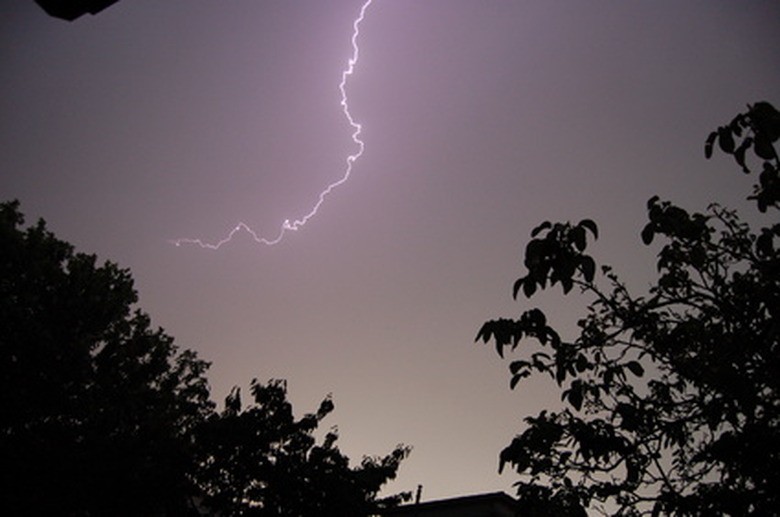What Are The Three Weather Conditions Under Which A Tropical Cyclone Usually Develops?
Tropical cyclones, also known as hurricanes or typhoons, are powerful storms that sometimes cause flooding, wind damage and lightning strikes. Occasionally, tropical cyclones result in significant fatalities. Even though tropical cyclones may be exciting to watch from inside the safety of your home, they can be quite dangerous. Fortunately they only occur under very specific conditions in certain places in the world. They form over warm tropical waters and affect the United States usually during the late summer and early autumn.
Warm Ocean Water
Warm Ocean Water
Tropical cyclones can only form over ocean surfaces that are at least 27 degrees Celsius warm. According to the Australian Bureau of Meteorology, these warm waters are necessary because tropical cyclones are powered by the release of latent heat from the condensation of water vapor in the atmosphere. There are not many places in the world where the surface of the ocean reaches 27 degrees celsius. In the United States, tropical cyclones occur primarily off the coast of the southeastern states like Florida and Georgia. Sometimes these storms move into the Gulf of Mexico and hit places like Louisiana. Tropical cyclones can be especially dangerous to islands such as Haiti and Cuba, since their small land masses won't slow the storms down.
Coriolis Force
Coriolis Force
Tropical cyclones need to form at least five degrees of latitude away from the equator. This is the equivalent of approximately 345 miles. This is because the Coriolis Force at the equator is zero and thus not strong enough to sustain the cyclone's rotation. The Coriolis Force is a force that acts upon any moving body in an independently rotating system. For example, since the earth is an independently rotating system, the way the air flows across the earth is affected by the Coriolis Force. During a tropical cyclone, the Coriolis Force deflects winds blowing towards the low pressure center of the storm and creates circulation.
Low Wind Shear
Low Wind Shear
Tropical Cyclones also require low wind shear to form. A storm is not officially a tropical cyclone until is lasts for at least six hours. While some powerful storms may form that fit all of the other requirements to be called a tropical cyclone, high wind shear will prevent them from lasting long enough to earn this title. Wind shear is the change in wind speed or direction with height in the atmosphere. High wind shear will slow spinning cyclones down and prevent them from lasting a long time.
Cite This Article
MLA
Hannigan, Elizabeth. "What Are The Three Weather Conditions Under Which A Tropical Cyclone Usually Develops?" sciencing.com, https://www.sciencing.com/three-tropical-cyclone-usually-develops-7525459/. 22 November 2019.
APA
Hannigan, Elizabeth. (2019, November 22). What Are The Three Weather Conditions Under Which A Tropical Cyclone Usually Develops?. sciencing.com. Retrieved from https://www.sciencing.com/three-tropical-cyclone-usually-develops-7525459/
Chicago
Hannigan, Elizabeth. What Are The Three Weather Conditions Under Which A Tropical Cyclone Usually Develops? last modified March 24, 2022. https://www.sciencing.com/three-tropical-cyclone-usually-develops-7525459/
